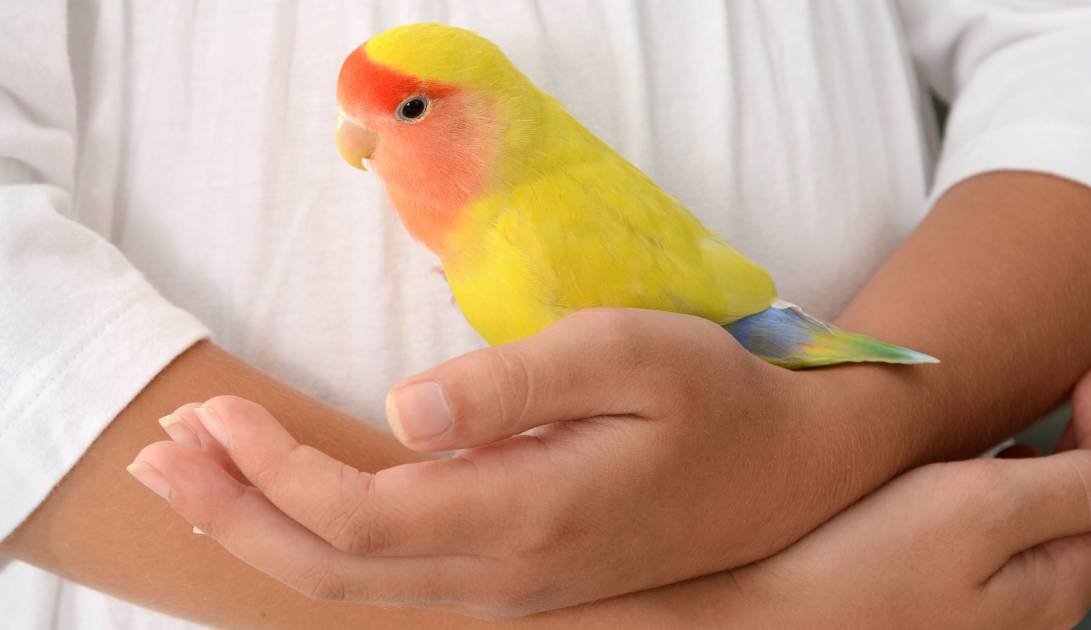Lovebirds, symbolising a genus of small parrots that fall in love… have always been known among the aviculturists for their vivid colours, emotional independence and strong social bonding. Bird lovers of all levels and even just about anyone can appreciate lovebirds for their endless beauty, energy, and companionship.
Drawing from my years of experience as an aviculturist, I can confidently say that lovebirds are among the most rewarding pet birds anyone can keep—provided they are cared for correctly.
In Short: Why Lovebirds Make Great Pets
| Size | Small and space-efficient |
| Personality | Loyal, playful, and affectionate |
| Lifespan | 10–15 years with proper care |
| Ideal for | Beginners, hobbyists, families, and apartment living |
| Needs | Social interaction, mental stimulation, daily care, and a clean, varied diet |
| Emotional Impact | Their affection and daily interaction can ease loneliness and lift depression |
Note: Many bird keepers report that lovebirds bring joy, companionship, and routine—factors that are known to support emotional health and reduce stress.
Species Variety: More Than Just a Pretty Bird
There are nine recognised species of lovebirds, but three are most commonly kept as pets:
- Masked Lovebird (Agapornis personatus)
- Peach-faced Lovebird or rosy-faced lovebird (Agapornis roseicollis)
- Fischer’s Lovebird (Agapornis fischeri)
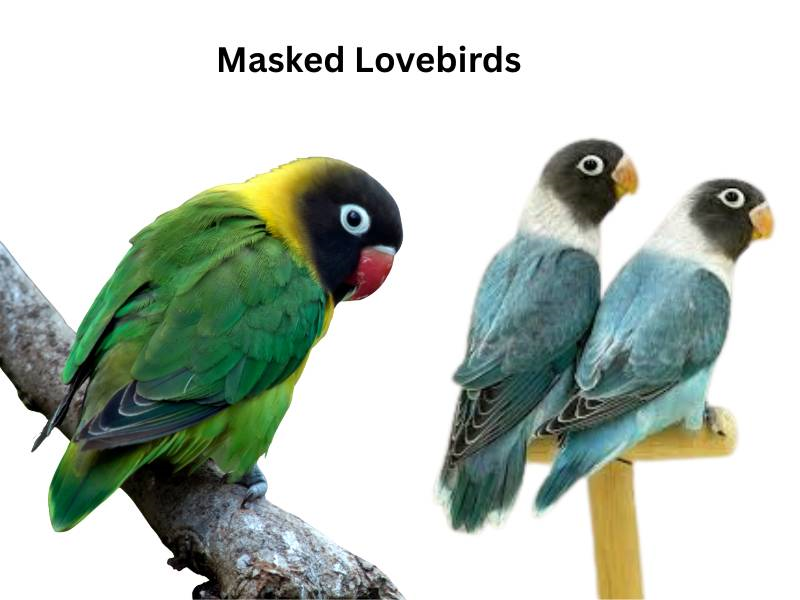
There are several color mutations of Masked Lovebirds, but what sets them apart is the distinct dark “mask” on their face, which gives them their name. This facial mask contrasts sharply with their bright body feathers, making them one of the most visually striking lovebird varieties
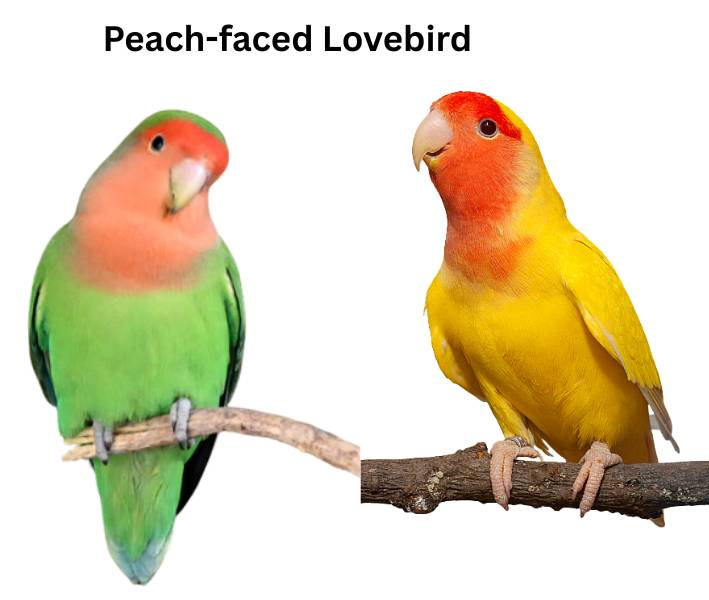
Peach-faced Lovebirds or rosy-faced lovebird (Agapornis roseicollis) are easily recognized by their vibrant green bodies and the distinct peach or rosy-pink coloring on their face and throat. This soft, warm facial tone sets them apart from other lovebird species. They also have a blue lower back and rump, adding to their striking appearance. Their unique coloration, along with their active and social nature, makes them one of the most popular lovebird varieties kept as pets.
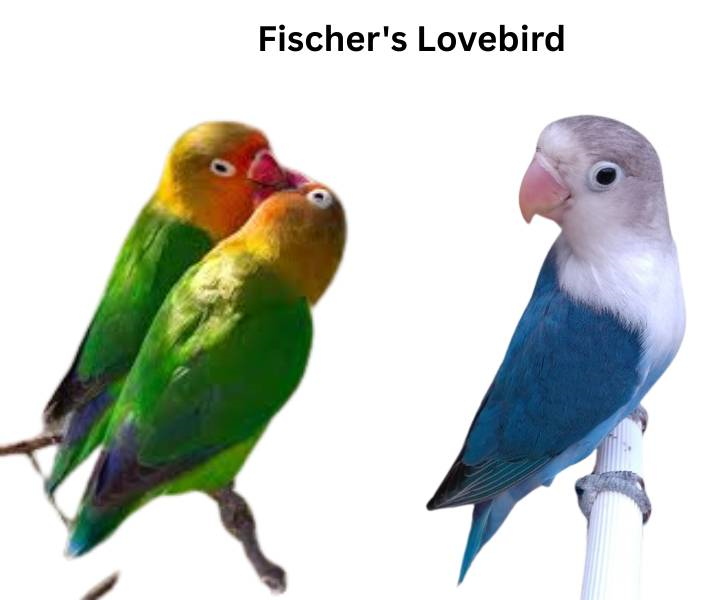
Fischer’s Lovebird (Agapornis fischeri) is a small, colorful parrot native to central Africa. It is best known for its vibrant plumage—bright green body, orange-red face and throat, and a golden-yellow chest that fades into green. The head is slightly darker, and it has a white eye-ring that gives it a bold, expressive look. What sets Fischer’s Lovebird apart is this rich blend of fiery facial colors combined with its calm, affectionate personality, making it a favorite among bird keepers.
Every species has its unique charming qualities, but all have in common strong pair bonding, being playful, and being very interactive creatures.
Bonding and Companionship
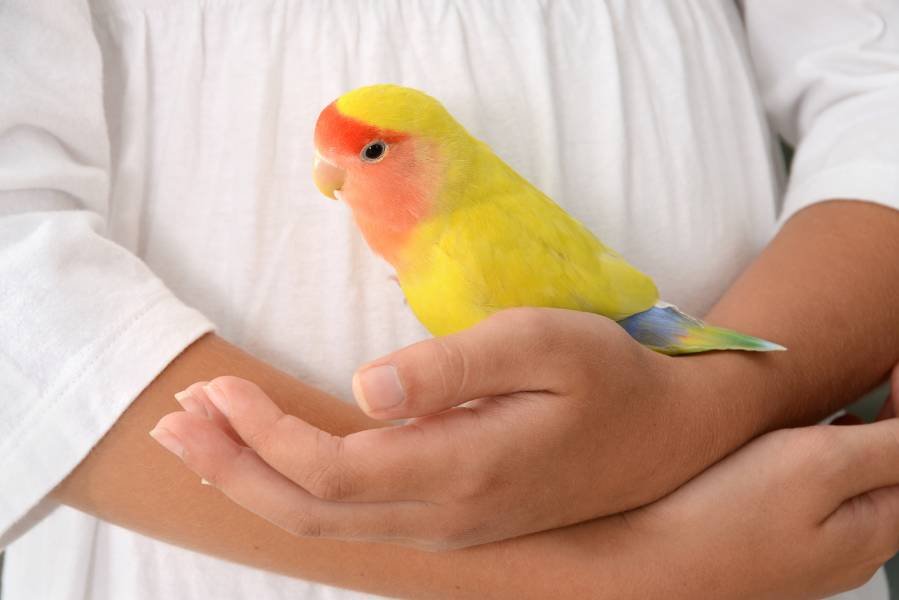
Lovebirds are famed for their strong emotional bonds. Whether housed as a pair or raised as a single bird, they form deep attachments—either to each other or to their caretaker. In my own aviary, I’ve watched solo-raised lovebirds become incredibly affectionate, following their human companions from room to room, chirping in response to voices, and eagerly seeking interaction.
Should You Keep One or Two?
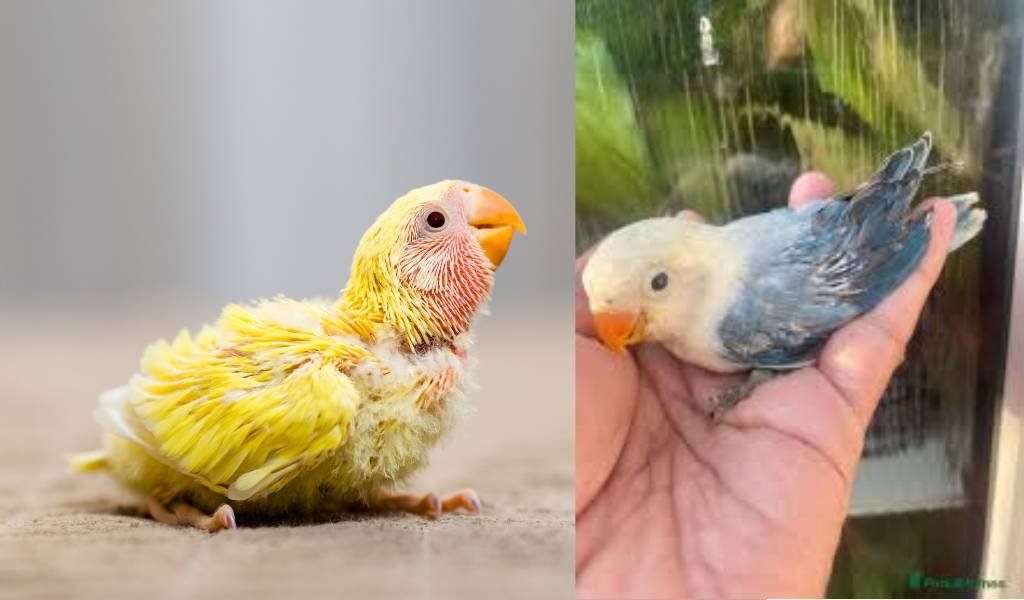
Many people believe that a lovebird cannot live alone and will suffer without a mate. This is a misconception. A single lovebird, particularly one that has been hand-raised and given proper attention from a young age, can live a healthy, happy life with regular human interaction.
The key to a thriving solo lovebird is daily engagement. Spend time talking, playing, and bonding with your bird. Offer a variety of toys, a consistent routine, and a calm, trusting environment. When treated with care and companionship, a single lovebird often forms a deep attachment to its owner—seeing them as part of its flock.
Intelligence and Energy
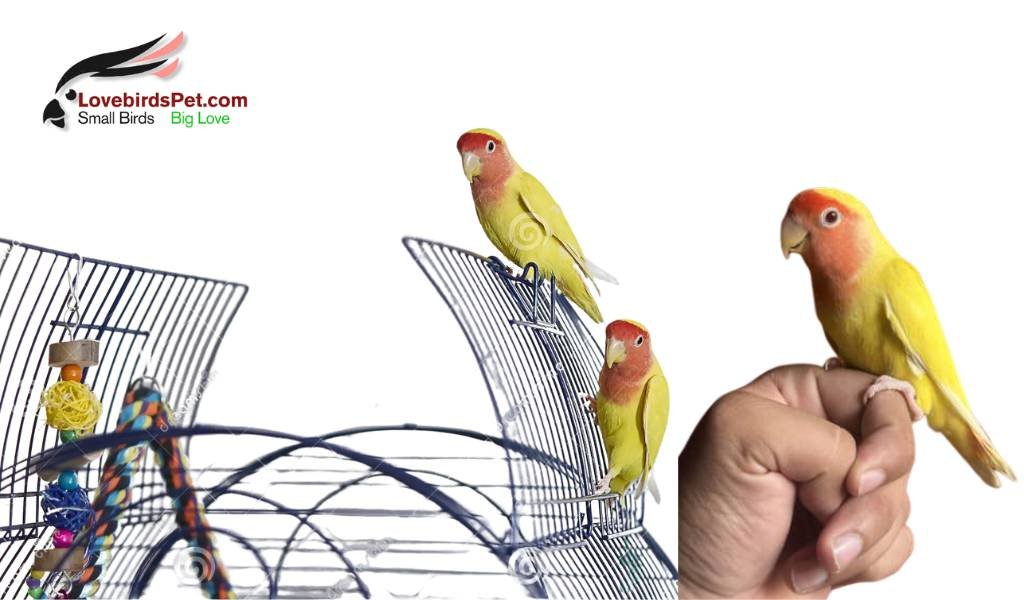
These birds are incredibly smart, and this shows in their high energy levels. They enjoy navigating the obstacles and climbing to higher levels within the structure to engage in their play. First, I always recommend that toys be rotated weekly to prevent your bird from getting bored and to encourage normal behaviours such as shredding, foraging, and swinging.
A well-socialised lovebird can learn:
- Basic commands (step-up, come)
- Name recognition
- Weddy — Spins and target training
However, interactive sessions are the way to go when it comes to building that bird-human bond and giving them mental stimulation.
Small Size, Practical for Any Home
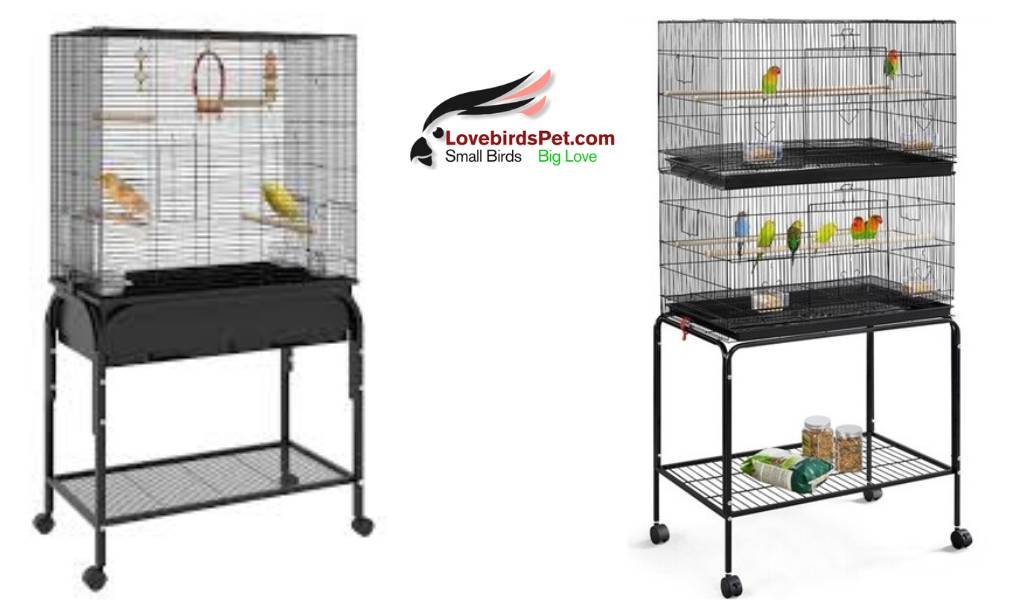
A lovebird is a small bird about 5 to 6 inches long, but they have a big attitude! And, unlike Cockatoos and Macaws or other larger parrots, their size makes it so they are less likely to disturb upstairs or downstairs neighbours in an apartment. But, make no mistake — in addition to the little box for littering and food trays, they will require extensive space to spread wings and play.
Minimum Cage Size:
- For a single Lovebird: Minimum cage size should be 18x18x18 inches (Width x Height x Depth).
- For a pair of Lovebirds: Recommended cage size is at least 24 inches wide, 18 inches high, and 18 inches deep. Always prioritize horizontal space over vertical, as lovebirds love to fly side to side.
- Bar spacing: ½ inch maximum
- Provide natural perches, swings, and foraging toys
Choosing the right cage and setup is essential. For a complete breakdown, see our post on Creating the Perfect Habitat for Lovebirds
Generally, I recommend placing the cage near natural light (but out of direct drafts) and using a full-spectrum UVB bird light 12-18 inches above the cage to promote Vitamin D3 synthesis and maintain good feather condition.
Easy on the Feeding, Even Easier with Keeping Healthy
A balanced lovebird diet includes:
- High-quality pellets
- Raw vegetables: carrot sticks, broccoli florets, spinach, Alfalfa (losrn), or whole peppers
- Fresh fruit: apple slices (seedless), banana
- Calcium: Use cuttlebone or mineral blocks, always
- Seed mix (Sunflower (in moderation), flaxseed (linseed), white millet, canary seed)
Lovebirds need a balanced diet to stay healthy. Learn more in our The Best Diet Plan for Lovebirds: Safe Foods, Portions & Feeding Tips
Ideal Bird for Beginners
Lovebirds strike the perfect balance for beginner bird owners:
- Less noisy than cockatoos or conures
- Friendlier than a finch or canary
- Trainable, social, and playful
Hand-fed lovebirds are one of the best introductions to parrots for a beginner birdkeeper. They are tough birds if looked after correctly, and with a little help, they are easy to tame.
Lifespan and Commitment
Lovebirds can live 10–15 years, or even longer, if given a good diet and a proper place to call home alongside good care. My first home-raised birds are actually still thriving over a decade later.
Lovebirds are not a short-term hobby; lovebirds are a long-term responsibility. That being said, the payoff is massive for anyone who values continued exposure, daily maintenance, and long-term bonding.
Debunking Common Myths
“Lovebirds die without a partner.”
A lovebird doesn’t need a mate to live a healthy life. With daily interaction, attention, and proper care, a single lovebird can bond closely with its owner and thrive on its own
“Lovebirds are aggressive.”
Not inherently. Research: Aggressive behaviour typically develops due to poor socialisation, hormonal imbalance, or overcrowding. With room to roam, some good training, and the trust of their new owner, they can develop into a good, cuddly companion.
“They’re too noisy for homes.”
Lovebirds are much quieter in comparison to larger parrots. Their calls are high-pitched and brief. Vocalisation can be avoided with stimulation and routine.
FINAL THOUGHTS
Lovebirds are not just decorative cage birds—they’re social, interactive, and deeply emotional animals. They form real bonds. They express moods. They need stimulation and love. But in return, they give companionship that few pets can match.
For bird lovers and beginners alike, the lovebird stands as one of the finest choices for a loyal, playful, and rewarding pet.
If you liked this guide, share it with some other bird lovers who may find it useful. Do you have a question or want to share your experiences with lovebirds? Please leave your thoughts in the comments below. Receiving feedback from you helps us keep generating valuable birdkeeping content.

